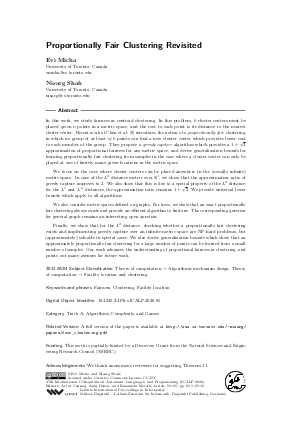LIPIcs.ICALP.2020.85.pdf
- Filesize: 0.49 MB
- 16 pages

 Creative Commons Attribution 3.0 Unported license
Creative Commons Attribution 3.0 Unported license

































Feedback for Dagstuhl Publishing